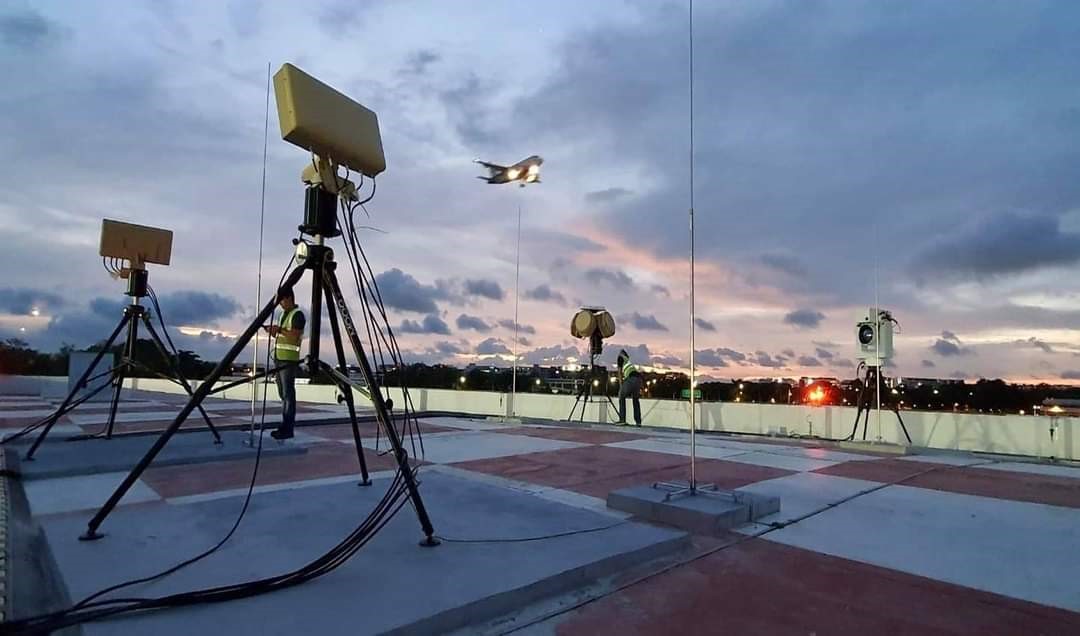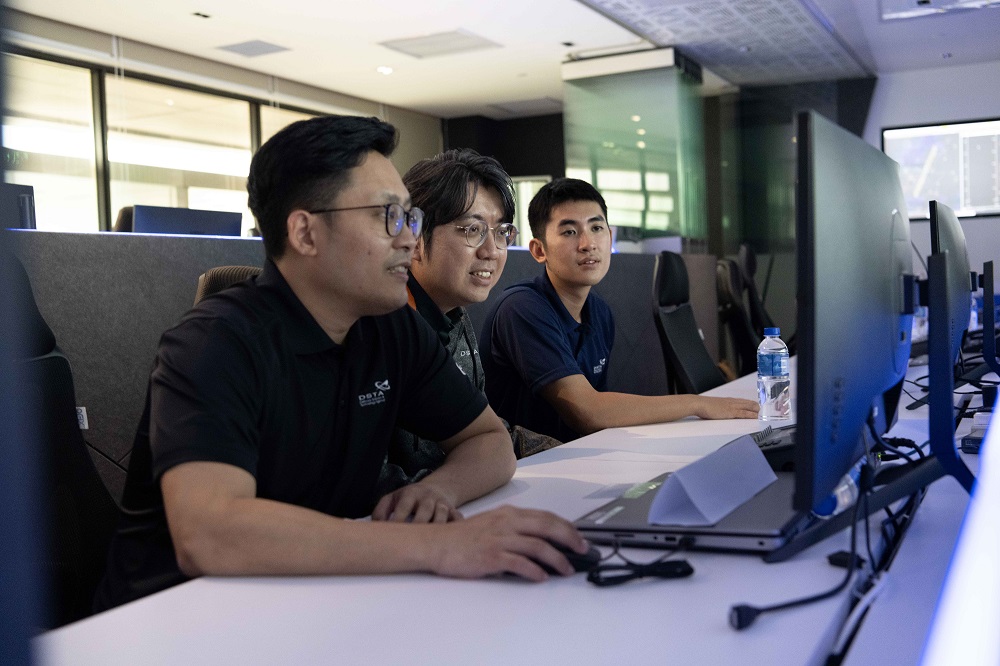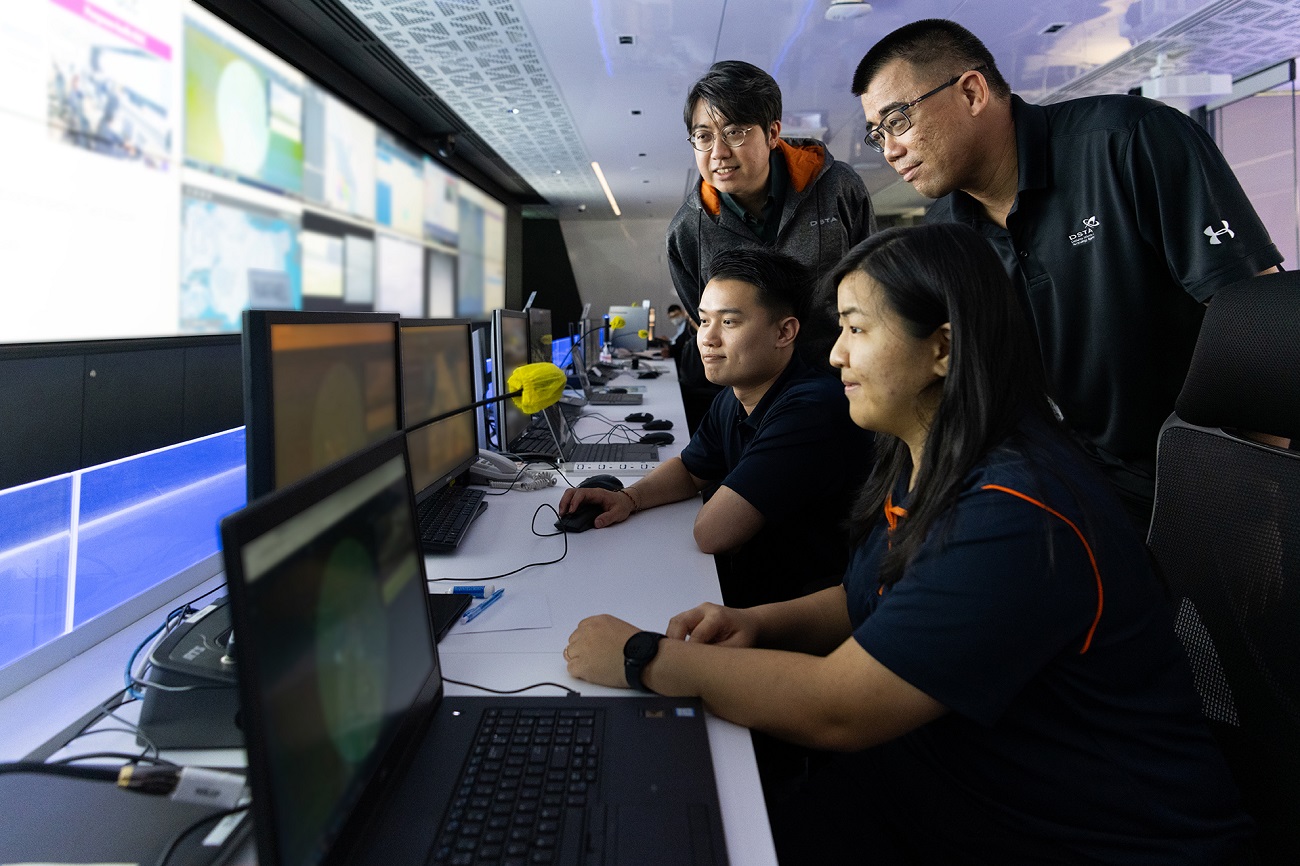Off to a Flying Start
It’s a bird! It’s a plane! No, it’s an unauthorised unmanned aerial system (UAS)!
Unauthorised UAS flying within five kilometres of an aerodrome – places where flight operations take place – poses significant risks to aircraft in flight and can disrupt airport operations. As such, we deployed counter-UAS (C-UAS) capabilities at Changi Airport in collaboration with the Civil Aviation Authority of Singapore (CAAS) and the Changi Airport Group.

Before any deployment, our team conducted extensive research into C-UAS systems available in the market. Senior Engineer (Advanced Systems) Gregory Lim remarked: “We had a few key considerations when selecting the C-UAS systems: whether they would be able to meet our requirements and timeline, good track records, as well as cost effectiveness.”

Comprising a suite of sensors and effectors, the C-UAS systems are manned by trained personnel from an operations centre.
Senior Engineer (Advanced Systems) Sandra Ng explained: “The systems are designed to provide early warning to the operators through different sensors. Once a potential unauthorised UAS is detected, these sensors will cue a camera to establish visual confirmation of the target. The operator can then use the effectors to disrupt the UAS.”
However, the airport’s environment posed several challenges to the systems’ deployment. Notably, Changi Airport is a highly cluttered environment filled with active radio frequencies, which could flood the C-UAS sensors with false alarms. To address this, the team worked closely with industry partners to analyse frequency data and finetuned the sensors to minimise that possibility. They also worked closely with CAAS to define the concepts of operations and safety procedures, to ensure that C-UAS and airport operations could interoperate safely and effectively.

Beyond just implementing the C-UAS systems, the team was also keen to provide the C-UAS operators with better situational awareness of the airspace, as well as the means to decide and execute the best course of action swiftly. For that, the team is working with CAAS to develop a Command, Control and Communication (C3) system.
As the ‘brain’ of the C-UAS systems, the C3 system would integrate information from the sensors and provide centralised control of the effectors, as well as make recommendations for more informed operational decisions. It would also provide a platform for effective, real-time coordination between key stakeholders, particularly C-UAS operators, air traffic controllers and mobile deployment troops in Changi Airport.
With the proliferation of drones and rapid advancement of relevant technology, the team hopes to integrate more systems from various agencies and enable an even more coordinated and effective C-UAS response at a higher level.
Senior Programme Manager (Advanced Systems) Dr Wong Jia Haur remarked: “We will continue to stay abreast with these tech trends and be agile in our C-UAS development, so that we can minimise operational gaps and safety risks to airport operations.”
